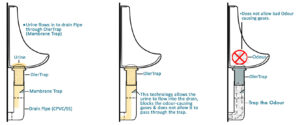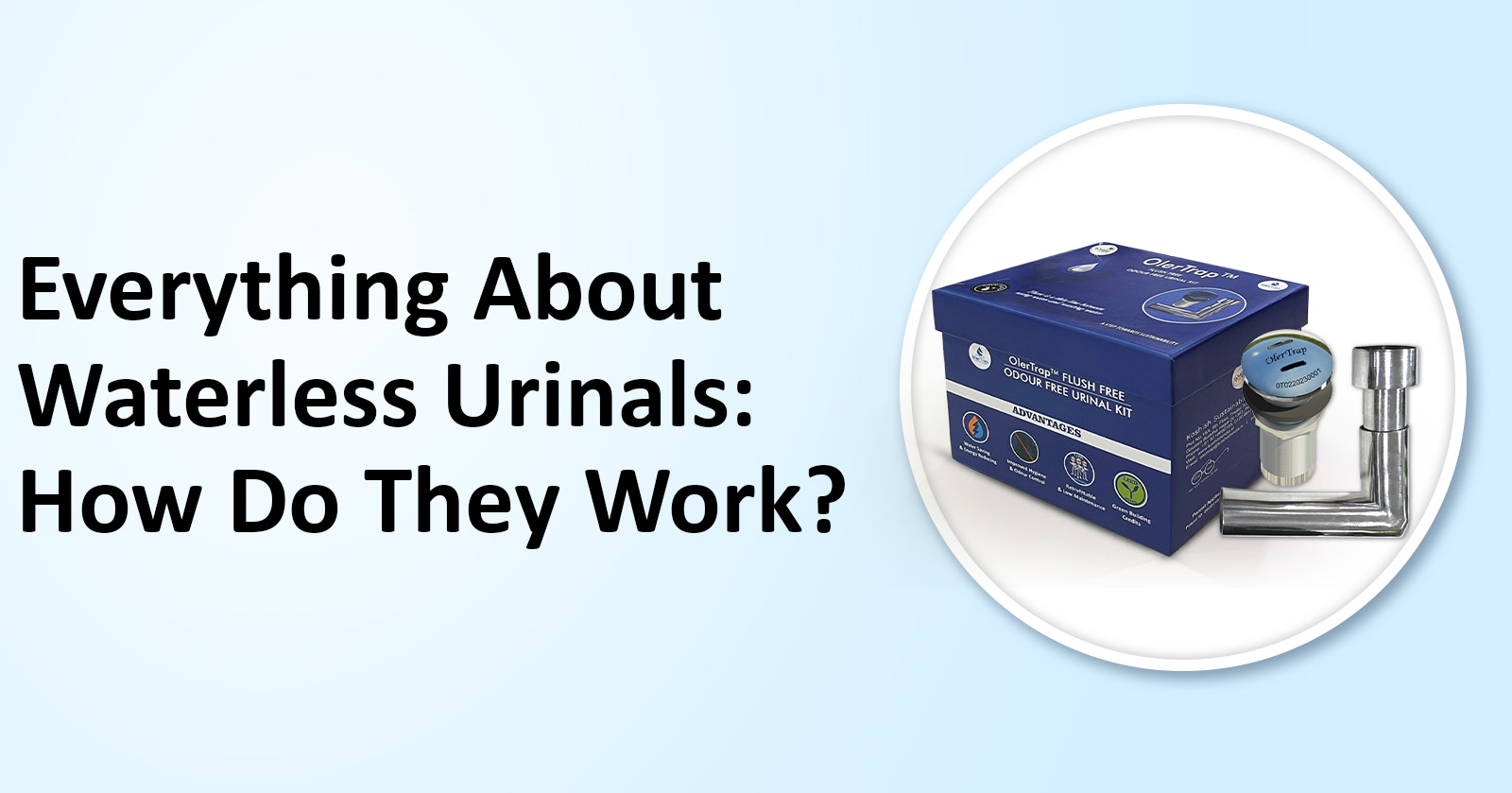Everything About Waterless Urinal: How Do They Work?
Waterless urinals have been around for a long time, but many people still have questions about how they work. Some myths say they smell bad, but the odor actually comes from ammonia in the urine.
Waterless urinals trap this ammonia, preventing any smell from spreading in the restroom. They not only save water but are also more hygienic and environmentally friendly compared to regular urinals. In this article, we’ll explain what a waterless urinal is, how it works, and how it supports a sustainable future.
What is a Waterless Urinal?
Waterless urinals, also called “flush-free urinals,” are eco-friendly fixtures that don’t need water to stay clean. Unlike regular urinals, which use water for hygiene and odor control, waterless urinals save water while keeping things clean and hygienic. They also require less maintenance, making them a smart and sustainable choice.
How Waterless Urinals Work?
There are different types of waterless urinals available, many of which use the principle of liquid density. In this type, an oil-based sealant floats on the drain to trap odors, while urine passes underneath. A more effective option uses a membrane in the drain trap, which stops odors from escaping and makes maintenance easier. The membrane is stronger and doesn’t need frequent replacement like the liquid sealant does.

The Significant Impact of Waterless Urinal
A single flush from a conventional urinal uses about 1–1.5 liters of water. It may not seem like much, but in a workplace with a dozen men, one urinal can use 75,000 to 170,000 liters of water in a year. That’s a huge amount! By switching to a waterless (flush-free) urinal, all this water can be saved since it doesn’t require flushing.
Selecting the Best Waterless Urinal
There are many waterless urinal options available, but it’s important to choose one that fits your needs. When selecting a waterless urinal, consider:
- It meets your specific requirements.
- Maintenance is easy and affordable.
- Cartridge replacement is cheap or not needed at all.
- It can be installed in existing urinals.
- The manufacturer has a good reputation and provides reliable after-sales service.
OlerTrap by Koshish India: An Excellent Option
One great option is OlerTrap by Koshish Sustainable Solutions Pvt. Ltd. It is built to handle the rough use of typical Indian urinals and uses membrane technology to prevent odors from escaping. It can be easily installed in existing urinals, so you don’t need new fixtures. OlerTrap doesn’t require cartridge changes or any consumables, meaning there are no recurring costs. It’s a one-time solution that supports a sustainable future.
Benefits of Waterless Urinals
Waterless urinals have become popular in recent years as more businesses and facilities look for ways to save money and go green. Installing waterless urinals in office buildings, industrial sites, and busy public areas offers several advantages.
Efficiency:
A typical office that switches to waterless urinals can save over 26,000 gallons of water per year.
Cleaner air:
Unlike conventional toilets and urinals, waterless urinals don’t flush, so they don’t release bacteria into the air or onto surfaces.
Hand hygiene:
Waterless urinals are touch-free, reducing the risk of cross-contamination.
Easier maintenance:
Without flush valves and with fewer clogs or overflows, waterless urinals are simpler to maintain, even if cartridges or sealant need occasional attention.
Conclusion
Now that we know what a waterless urinal is and how it works, it’s clear they offer many benefits, including saving water, reducing costs, and improving restroom hygiene. Choosing the right urinal ensures you get the most from these advantages.
When selecting one, consider factors like suitability, easy maintenance, cartridge cost, retrofit options, brand reputation, environmental impact, and overall value. OlerTrap is a reliable choice that supports sustainability and provides long-term benefits.
Frequently Asked Questions (FAQs)
Question: How does a no-water urinal save water?
Answer: Since it does not use water for flushing, a single no-water urinal can save thousands of liters of water every year, making it ideal for eco-conscious buildings.
Question: Are water-saving urinals cost-effective?
Answer: Yes, they reduce water bills, lower maintenance costs, and contribute to eco-friendly sanitation efforts.
Question: How does urinal technology benefit public restrooms?
Answer: Advanced urinal technology reduces water consumption, improves hygiene, and makes restrooms more sustainable and user-friendly.
Question: How do no-water urinals contribute to eco-friendly sanitation?
Answer: No-water urinals save water, reduce sewage load, and minimize chemical use, making them a key part of eco-friendly restroom solutions.
Question: Why are water-efficient restroom solutions important?
Answer: They help conserve water, lower utility bills, and support sustainable building practices, making them essential for eco-conscious homes and offices.








